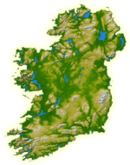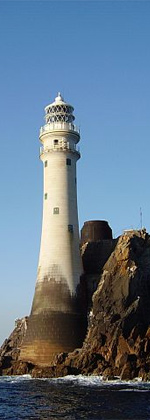
County Donegal is a county of Ireland in the province of Ulster and in the Northern and Western Region. It is named after the town of Donegal in the south of the county. It has also been known as County Tyrconnell or Tirconaill, after the historic territory. Donegal County Council is the local council and Lifford is the county town.

Clonmany is a village and civil parish in north-west Inishowen, in County Donegal, Ireland. The Urris valley to the west of Clonmany village was the last outpost of the Irish language in Inishowen. In the 19th century, the area was an important location for poitín distillation. Outside the village, there are a number of notable townlands, including Kinnea (Rockstown), Crossconnell, Dunaff, and Leenan.
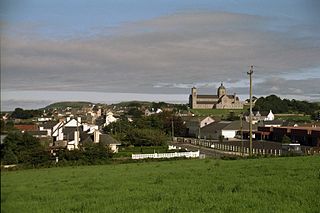
Carndonagh is a town on the Inishowen peninsula in County Donegal, Ireland, close to Trawbreaga Bay. It is the site of the Carndonagh stones. The Irish name, Carn Domhnach, means "the cairn or mound of the church".

Buncrana is a town in Inishowen in the north of County Donegal in Ulster, the northern province in Ireland. The town sits on the eastern shores of Lough Swilly, being 23 kilometres (14 mi) northwest of Derry and 43 kilometres (27 mi) north of Letterkenny. In the 2022 census, the population was 6,971, making it the second most populous town in County Donegal, after Letterkenny, and the largest in Inishowen.
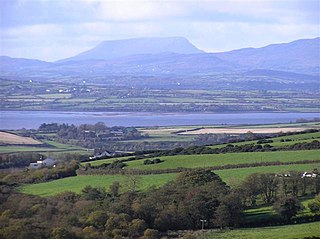
Lough Swilly in Ireland is a glacial fjord or sea inlet lying between the western side of the Inishowen Peninsula and the Fanad Peninsula, in County Donegal. Along with Carlingford Lough and Killary Harbour it is one of three glacial fjords in Ireland.

Greencastle is a commercial fishing port located in the north-east of the Inishowen Peninsula on the north coast of County Donegal in Ulster, Ireland. The port is on the western shores of Lough Foyle. Nowadays, given the decline in the fishing industry, it resembles more closely a 'typical' Donegal holiday village. It is located a few miles from Moville and is about 20 miles from Derry.

The O'Doherty family of Inishowen in County Donegal is an Irish clan who were a prominent sept of the Northern Uí Néill's Cenél Conaill, and one of the most powerful clans of Tír Connaill.

The Londonderry and Lough Swilly Railway Company was an Irish public transport and freight company that operated in parts of County Londonderry and County Donegal between 1853 and 2014. Incorporated in June 1853, it once operated 99 miles of railways. It began the transition to bus and road freight services in 1929. It closed its last railway line in July 1953 but continued to operate bus services under the name Lough Swilly Bus Company until April 2014, becoming the oldest railway company established in the Victorian era to continue trading as a commercial concern into the 21st century. Following a High Court petition by HM Revenue and Customs, the company went into liquidation and operated its final bus services on 19 April 2014.

Urris is a valley to the west of the parish of Clonmany, in County Donegal, Ireland. It comprises the townlands of Crossconnell, Dunaff, Kinnea, Leenan, Letter, and Urrismenagh. It sits on the eastern side of Loch Swilly and it is bounded to the south-east by the Urris hills, and to the east by Binion hill. To the north, there is Rockstown bay and Tullagh peninsula. There are two entrances to Urris; the Gap of Mamore, and Crossconnell.

Dunree is a townland in north-west Inishowen, in County Donegal, Ireland. Part of the civil parish of Desertegney, the townland has an area of approximately 0.8 square kilometres (0.3 sq mi), and had a population of 33 people as of the 2011 census.

Burt is a parish in County Donegal, Ireland, on the main road between Letterkenny and Derry.
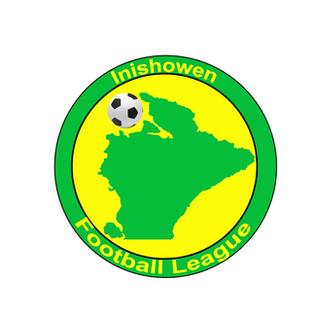
The Inishowen Football League (IOFL) is an amateur league for football clubs in the Inishowen peninsula of County Donegal, Ireland. There are three divisions, with a promotion-and-relegation system in operation. This three-division setup, introduced in 2016, replaced a structure that had been in place for twenty years.

Carndonagh railway station is a disused station that served the town of Carndonagh and surrounding area in County Donegal, Ireland. It was the terminal station on the branch line of the Londonderry and Lough Swilly Railway Line that served the northern part of the Inishowen peninsula. This extension was known as the Buncrana to Carndonagh branch line, and measured 18.5 miles. The line was sometimes also known as the Carndonagh extension.

The Wild Atlantic Way is a tourism trail on the west coast, and on parts of the north and south coasts, of Ireland. The 2,500 km driving route passes through nine counties and three provinces, stretching from County Donegal's Inishowen Peninsula in Ulster to Kinsale, County Cork, in Munster, on the Celtic Sea coast.
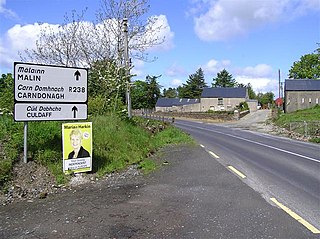
The R238 road is a regional road in Ireland. It is a ring road around the Inishowen Peninsula in County Donegal. The R238 is also part of the main road from Derry to Buncrana. Sections of the road form part of the Wild Atlantic Way. In July 2010, the road was the site of Ireland's worst road crash resulting in eight deaths.
Paul Callaghan is an Irish Gaelic football coach and former goalkeeper for the Donegal county team. First called into the senior county team in 1991, he was reserve goalkeeper when the team won the Sam Maguire Cup the following year by defeating Dublin in the final.

Inishowen West, also called West Inishowen or Innishowen West, is a barony in County Donegal, Ireland. Baronies were mainly cadastral rather than administrative units. They acquired modest local taxation and spending functions in the 19th century before being superseded by the Local Government (Ireland) Act 1898.

Inishowen East, also called East Inishowen or Innishowen East, is a barony in County Donegal, Ireland. Baronies were mainly cadastral rather than administrative units. They acquired modest local taxation and spending functions in the 19th century before being superseded by the Local Government (Ireland) Act 1898.
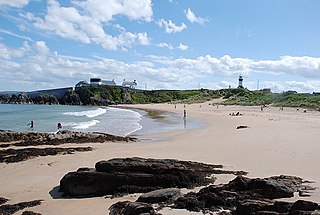
Shrove is a coastal hamlet and townland in Inishowen in the north of County Donegal in Ulster, the northern province in Ireland. The hamlet is located a short distance to the north of Greencastle in the north-east of Inishowen, a peninsula on the north coast of Ireland. The name of both the hamlet and the townland is also sometimes written as Shroove, and is sometimes written as Stroove by some government bodies.

Lough Swilly Lifeboat Station is located next to Ned's Point Fort in Buncrana, a town and former naval port, which sits on the eastern shore of Lough Swilly, on the Inishowen peninsula in County Donegal, on the north coast of Ireland




























